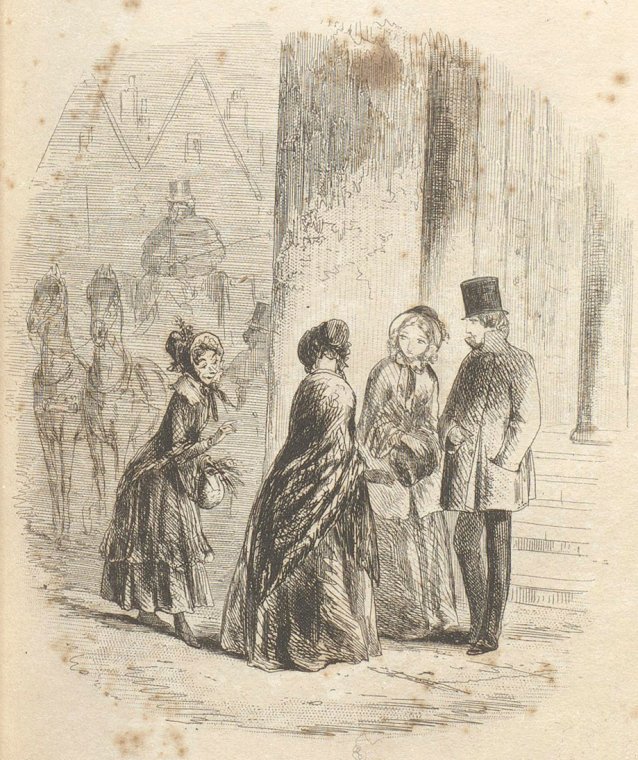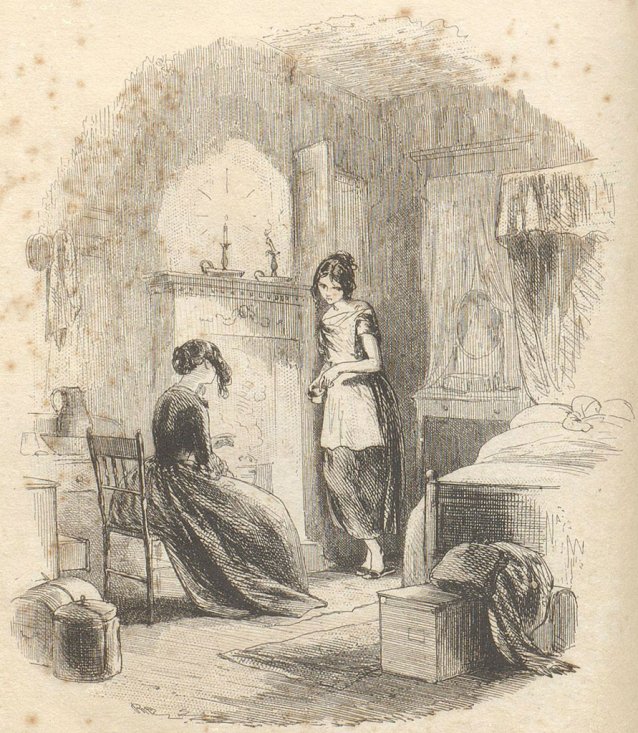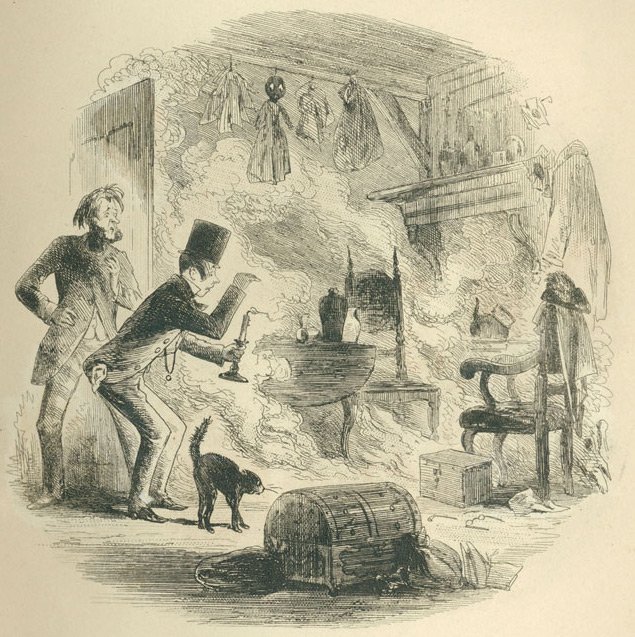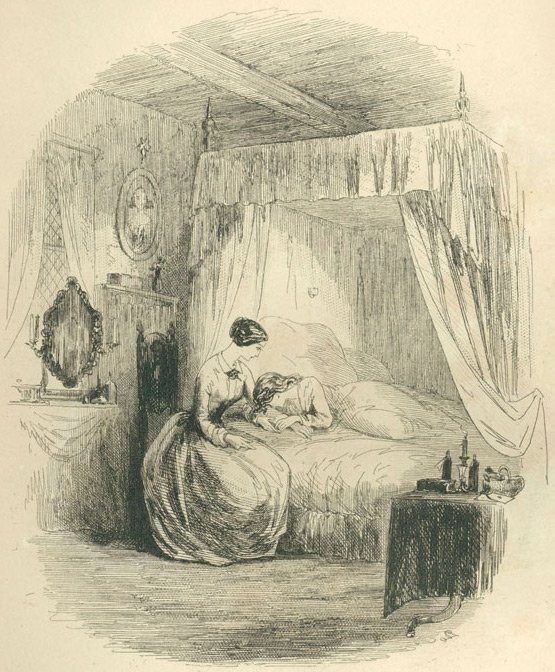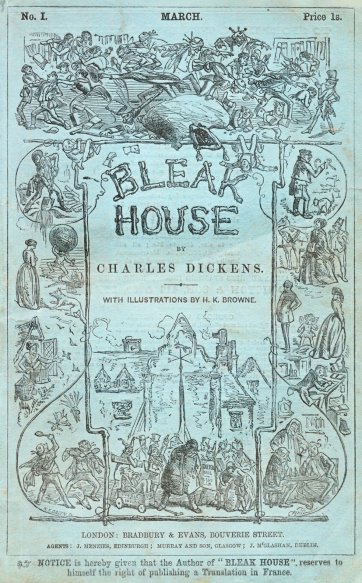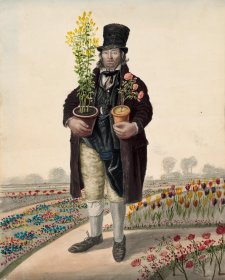The frightful Harold Skimpole likewise engages in old-fashioned sight-seeing at Chesney Wold (Ch. 37): “There were such portentous shepherdesses among the Ladies Dedlock dead and gone, he told us, that peaceful crooks became weapons of assault in their hands. They tended their flocks severely in buckram and powder, and put their sticking plaster patches on to terrify commoners, as the chiefs of some other tribes put on their war-paint [Jonathan Richardson or Joseph Highmore or Charles-André van Loo]. There was a Sir Somebody Dedlock, with a battle, a sprung-mine, volumesof smoke, flashes of lightning, a town on fire, and a stormed fort, all in full action between his horse’s two hind legs: showing, he supposed, how little a Dedlock made of such trifles [Jan Wyck or Peter Tillemans or James Seymour]. The whole race he represented as having evidently been, in life, what he called ‘stuffed people’…”
As the novel develops, the imposition of darkness and the re-admission of light (death and re-animation) soon project over Lady Dedlock’s portrait, in particular, a strong and equivalent moral cast. Shortly before the Dedlocks return from Paris to hold court at Chesney Wold: “The clear cold sunshine…looks in at the windows, and touches the ancestral portraits with bars and patches of brightness, never contemplated by the painters. Athwart the picture of my Lady, over the great chimney-piece, it throws a broad bend-sinister of light that strikes down crookedly into the hearth, and seems to rend it.” A “broad bend-sinister” is the Heraldic device—a diagonal line running (from top left to bottom right) across the escutcheon—that signifies illegitimacy, so Dickens’s image here could not be a blunter portent. Despite the housekeeper’s earlier protestation that “disgrace never comes to Chesney Wold,” trouble is definitely brewing in the House of Dedlock, and My Lady would appear to be the cause.
For the time being, however, Chesney Wold springs to life (Ch. 12): “Seen by night, from distant openings in the trees, the row of windows in the long drawing-room, where my Lady’s portrait hangs over the great chimney-piece, is like a row of jewels set in a black frame.” As well, the pictures seem to ape Sir Leicester’s almost wilful obliviousness; elsewhere (Ch. 40) he is brilliantly described as “a magnificent refrigerator.” Pausing at the foot of the oak staircase with absurd ceremony, Sir Leicester prepares to act as My Lady’s “knightly escort,” whereupon “A staring old Dedlock in a panel [Eworth or Gheeraerts or Peake or some such], as large as life and as dull, looks as if he didn’t know what to make of it—which was probably his state of mind in the days of Queen Elizabeth.”
Still later (Ch. 16), resigned to his inherited affliction of gout (Ch. 16), Sir Leicester lies “in a flush of crimson and gold, in the midst of the great drawing-room, before his favourite picture of My Lady, with broad strips of sunlight shining in…his forefathers, looking on him from the walls, say, ‘Each of us was a passing reality here, and left this coloured shadow of himself, and melted into remembrance as dreamy as the distant voices of the rooks now lulling you to rest;’ and bear their testimony to his greatness too.”
As the crisis builds, so too does the significance of the portraits. In Ch. 29 the omniscient narrator asks whether there is no influence that will startle Sir Leicester, “not to say, to make the very trees at Chesney Wold fling up their knotted arms, the very portraits frown, the very armour stir?” And much later, when the house is brought back to life in the summer (Ch. 40): “Then do the frozen Dedlocks thaw. Strange movements come upon their features, as the shadows of leaves play there. A dense Justice in a corner is beguiled into a wink [Godfrey Kneller]. A staring baronet, with a truncheon, gets a dimple in his chin. Down into the bosom of a stony shepherdess there steals a fleck of light and warmth that would have done it good, a hundred years ago [Philip Mercier]. One ancestress of Volumnia, in high-heeled shoes, very like her—casting the shadow of that virgin event before her two full centuries [Anthony van Dyck]—shoots out into a halo and becomes a saint. A maid of honour of the court of Charles the Second, with large round eyes (and other charms to correspond), seems to bathe in glowing water, and it ripples as it glows [Peter Lely]. But the fire of the sun is dying. Even now the floor is dusky, and shadow slowly mounts the walls, bringing the Dedlocks down like age and death. And now, upon my Lady’s picture over the great chimney-piece, a weird shade falls from some old tree, that turns it pale, and flutters it, and looks as if a great arm held a veil or hood, watching an opportunity to draw it over her. Higher and darker rises shadow on the wall—now a red gloom on the ceiling—now the fire is out… [But,] of all the shadows in Chesney Wold, the shadow in the long drawing-room upon my Lady’s picture is the first to come, the last to be disturbed. At this hour and by this light it changes into threatening hands raised up, and menacing the handsome face with every breath that stirs.”



